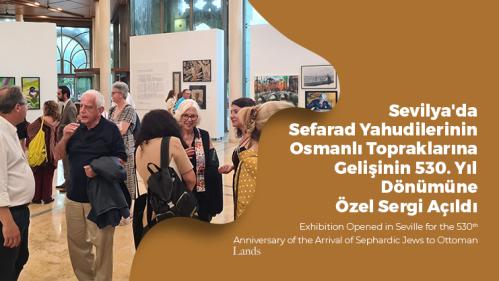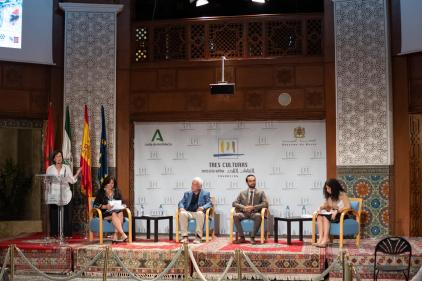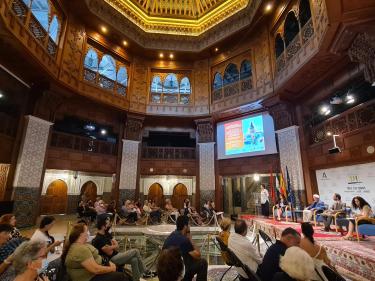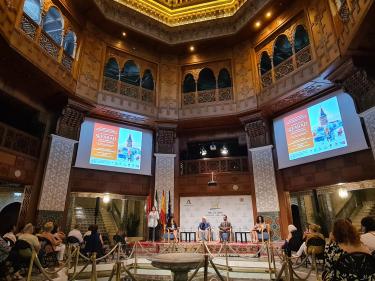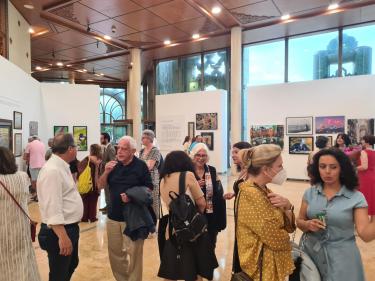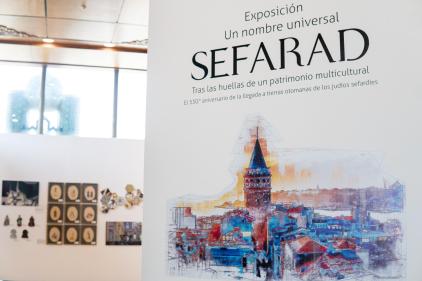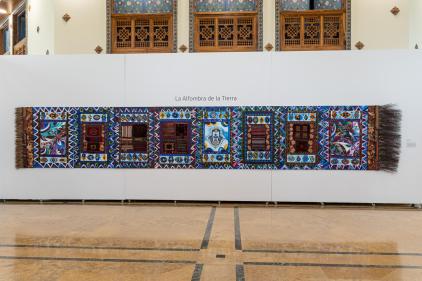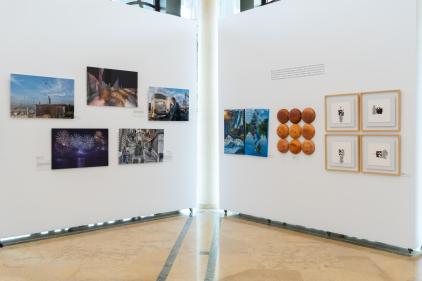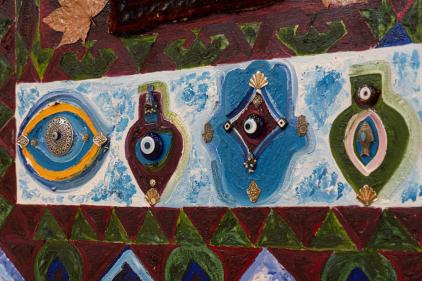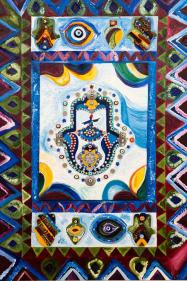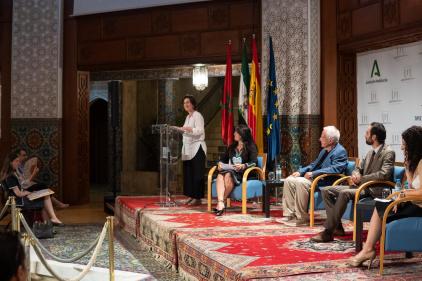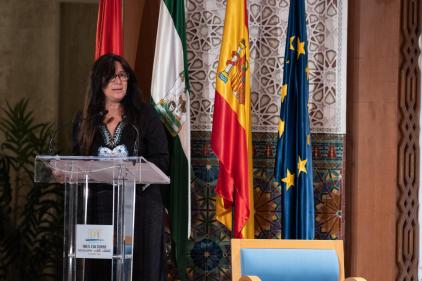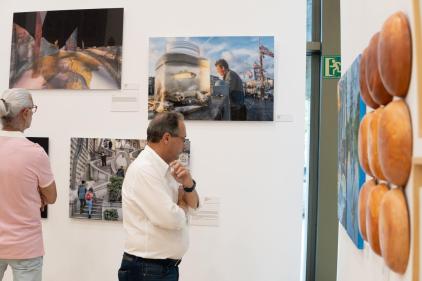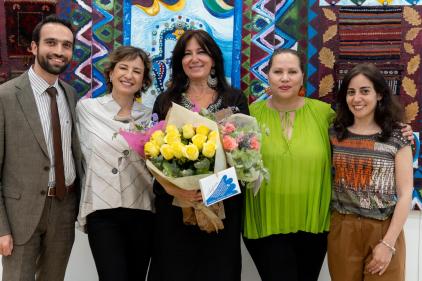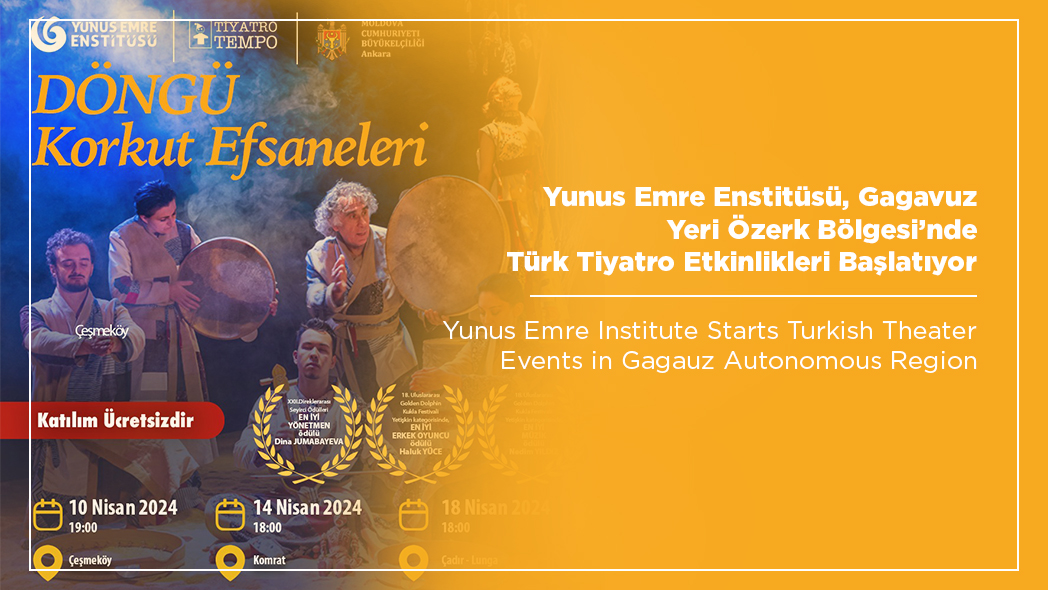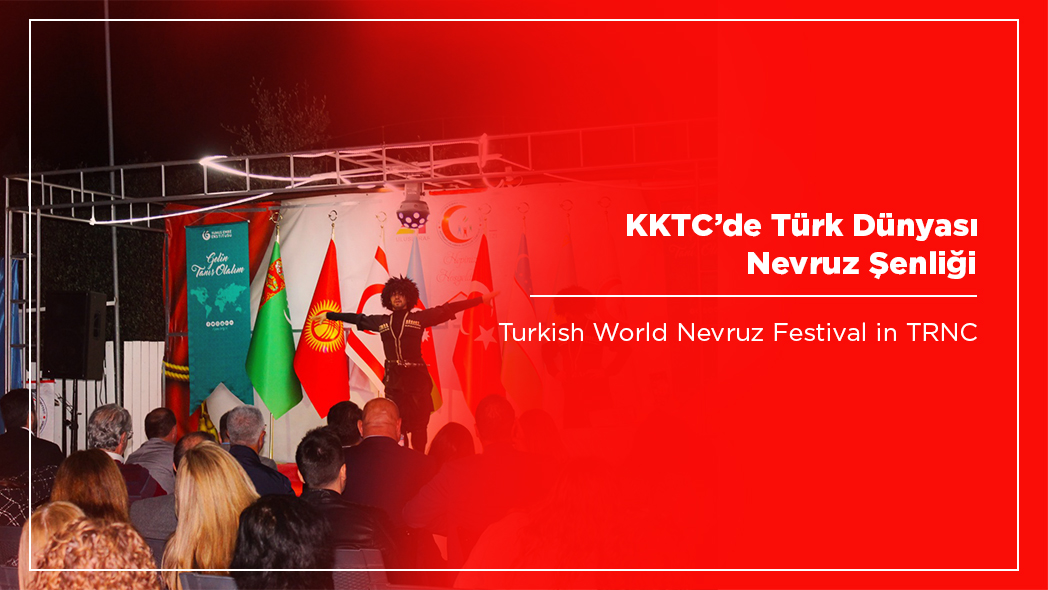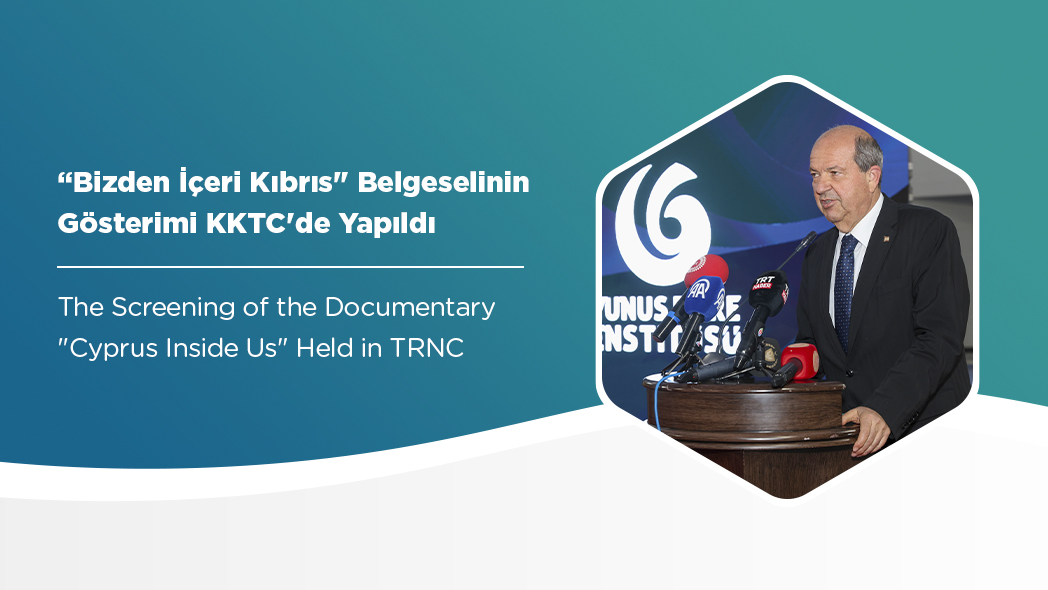530th Anniversary of the Arrival of Sephardic Jews to Ottoman Lands Commemorated in Seville
A series of events were held in Seville, in the Andalusian region of southern Spain, to mark the 530th anniversary of the arrival of Sephardic Jews to Ottoman lands.
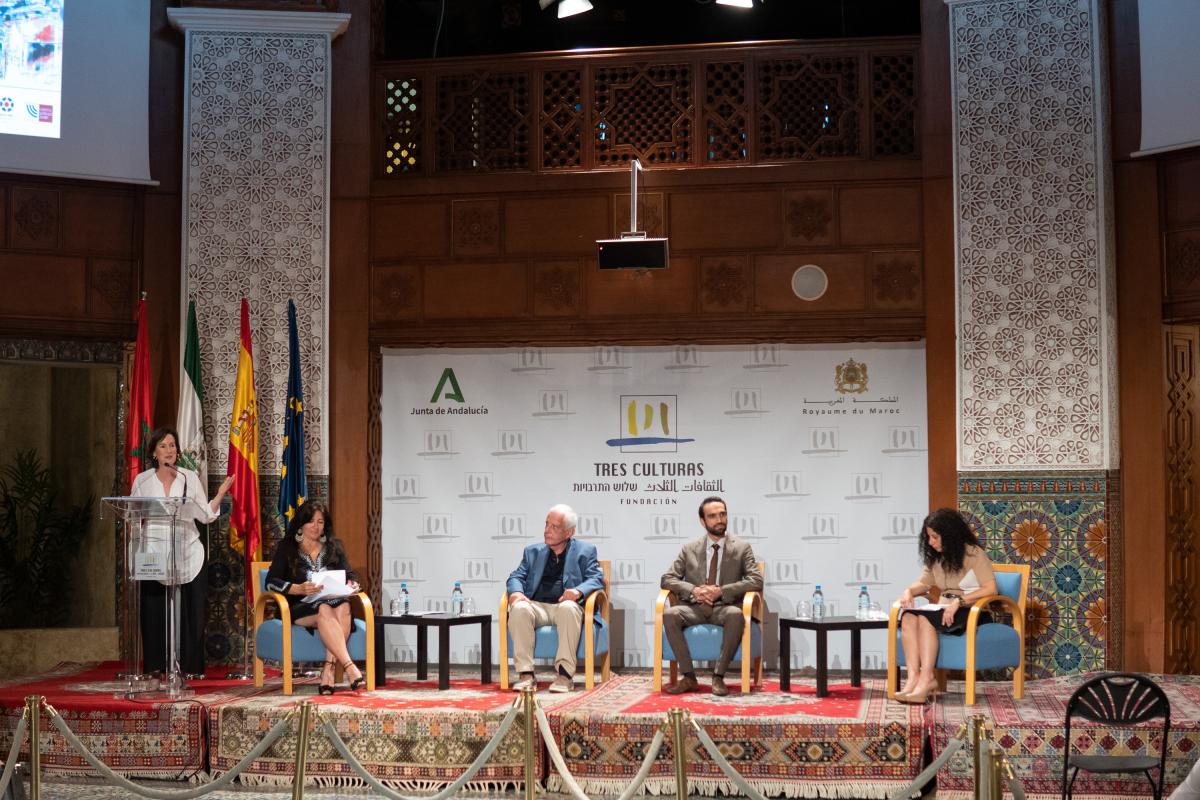 Organized by Yunus Emre Institute’s headquarters in Madrid, which promotes Turkey’s cultural heritage to the whole world, the group exhibition titled “Sefarad: Following of a Multicultural Heritage’’ was opened to visitors in Seville, Spain, on May 19, 2022. Curated by Istanbul-born Turkish-Sephardic artist Terry Catalan, 33 Turkish-Sephardic artists, who work in many branches of modern arts and traditional Turkish handicrafts, participated with more than 70 works. In the group exhibition, there were works belonging to many art branches such as oil painting, marbling, acrylic, photography, relief, and ceramic art, as well as depiction on fabric.
Organized by Yunus Emre Institute’s headquarters in Madrid, which promotes Turkey’s cultural heritage to the whole world, the group exhibition titled “Sefarad: Following of a Multicultural Heritage’’ was opened to visitors in Seville, Spain, on May 19, 2022. Curated by Istanbul-born Turkish-Sephardic artist Terry Catalan, 33 Turkish-Sephardic artists, who work in many branches of modern arts and traditional Turkish handicrafts, participated with more than 70 works. In the group exhibition, there were works belonging to many art branches such as oil painting, marbling, acrylic, photography, relief, and ceramic art, as well as depiction on fabric.
The fact that opening of the exhibition, which reflects the traces of the multicultural historical heritage of the Turkish Sephardic society from Spain to Turkey, takes place on May 19, Commemoration of Atatürk, Youth and Sports Day, made the exhibition much more meaningful.
IT IS ORGANIZED SINCE 2014
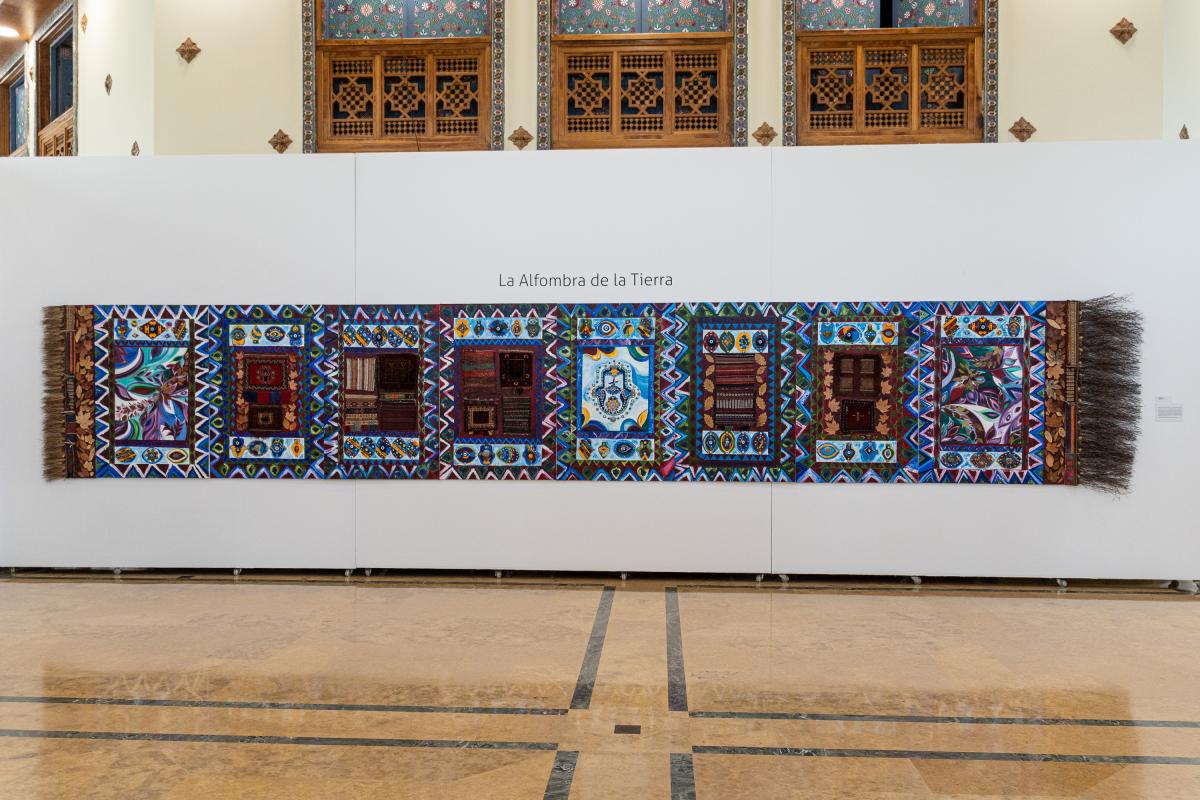
The group exhibition was opened under the hosting of Tres Culturas, one of the important foundations of Seville.
The exhibition held in Fundación Tres Cultural, which has an important place in the cultural and artistic life of Seville, the capital of the Autonomous Region of Andalusia, was contributed by the Turkish Embassy in Madrid, Madrid Yunus Emre Institute, The Quincentennial Foundation Museum of Turkish Jews, and Centro Sefarad-Israel institution.
The group exhibition, which was exhibited at Amsterdam Yunus Emre Institute last year, was held for the first time in 2014 at Pere Pruna Center in Barcelona in cooperation with the City Council and Barcelona Turkish Consulate General. In 2018, the “Göke’’ exhibition was held with Sephardic artists with the valuable support of the London Yunus Emre Institute, the Turkish Embassy, and the Cervantes Institute.
THE INSPIRER OF THE EXHIBITION WAS YUNUS EMRE’S PHILOSOPHY OF PEACE, BROTHERHOOD, AND TOLERANCE
Setting off from Yunus Emre’s philosophy that adopts peace, brotherhood, and tolerance as a principle, the exhibition titled “Sefarad: Following of a Multicultural Heritage’’ aimed to emphasize that the Sephardic people who were exiled from Spain in 1492 have lived in peace and tranquility in Turkey for 530 years from their admission to the Ottoman lands in 1492 and to enhance the cultural relations between Spain and Turkey, where the roots of the Sephardic society belong. The artworks created by Sephardic artists inspired by Turkish culture and art were enriched by historical documents and valuable replicas such as the drawings of Ottoman-era Jewish clothes taken from The Quincentennial Foundation Museum of Turkish Jews, the tax exemption issued by Suleiman the Magnificent in 1526 for Budin Jews, Blood Libel issued by Sultan Abdulaziz in 1866 to project the law of the Jews living in the Ottoman lands, and the Crescent and Star Ketuba of 1916.
SEPHARDIC PEOPLE HAVE RICH LINKS TO TURKISH CULTURE
Terry Catalan, in her speech at the opening of the exhibition, drew attention to the fact the Sephardic people have lived together with the Turkish society for 530 years and used the following expressions:
“The exhibition shows the integration of Sephardic people in Turkey with Turkish culture. We wanted to show that different groups can live in brotherhood by bringing together works based on the rich cultural heritage of the Ottoman Empire and the Sephardic culture with art lovers in Seville. I would like to express my eternal gratitude to Yunus Emre Institute and all stakeholder institutions for organizing such a meaningful exhibition.
HABIB GEREZ AND IZZET KERİBAR WERE THE GUESTS OF HONOR OF THE EXHIBITION
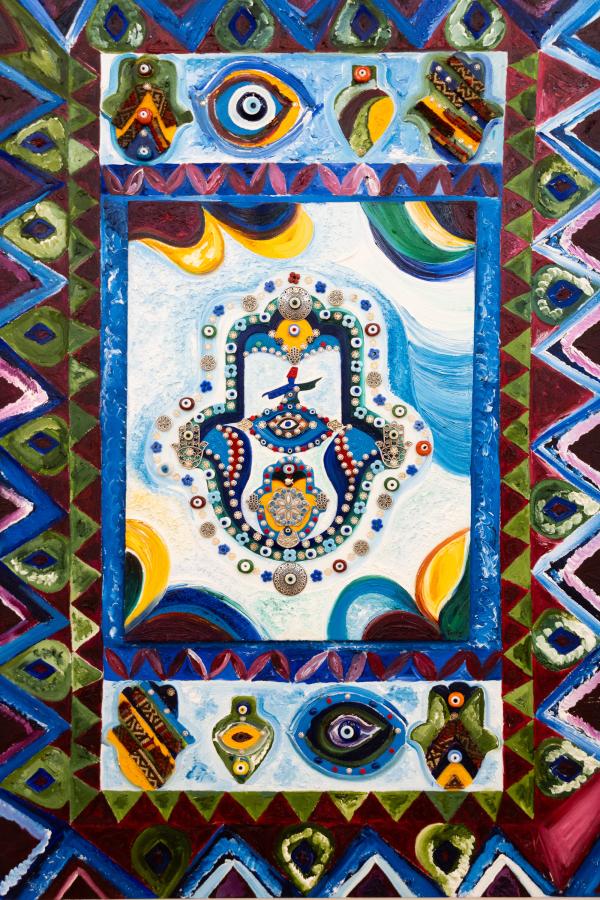
Painter and poet Habib Gerez, one of the doyens of Turkish-Sephardic art, Bubi, one of the pioneers of contemporary painting, and photographer İzzet Keribar participated in the exhibition as honored artists.
İzzet Keribar, who was deemed worthy of the Presidential Culture and Arts Grand Awards in 2018, expressed his happiness to be a part of such an exhibition as a Turkish-Sephardic artist.
Silvyo Ovadya, President of The Quincentennial Foundation Museum of Turkish Jews, expressed their satisfaction in holding this important exhibition together with Yunus Emre Institute, in Spain after England and the Netherlands gave information about the daily life and cultural and artistic activities of the Sephardic community living in Turkey. He stated that after settling in the Ottoman lands, they have lived in Turkey with the feelings of brotherhood for 530 years, and the fact that his speech in Ladino (Sephardic Spanish) was the best indication of this.
Nisya İşman Allovi, director of The Quincentennial Foundation Museum of Turkish Jews, noted that they were very pleased that the exhibition which they previously held in London and Amsterdam, together with Yunus Emre Institute, met art lovers this time in Seville, and thanked all people and institutions who contributed.
Giving information about the exhibition, Madrid Yunus Emre Institute Director Assoc. Dr. Ersin Adıgüzel also said that the Sephardic people are a community that embraces Ottoman and Turkish cultures while preserving their Spanish roots, culture and language and expresses a common value between the two countries.
EXHIBITION WILL BE OPEN UNTIL SEPTEMBER, EVENTS WILL CONTINUE ALL YEAR
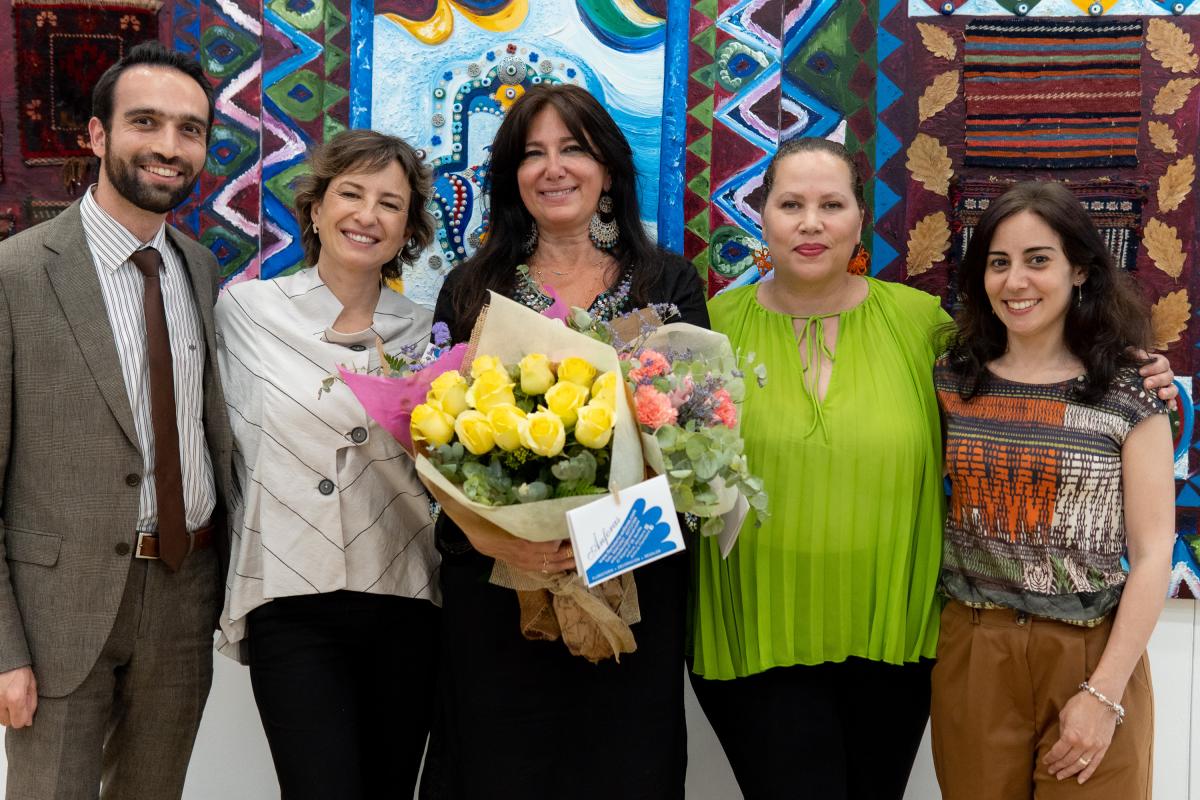
Stating that with this exhibition, they reflect the embracing culture and artistic depth of Turkey that values people regardless of language, religion, or race in a very remarkable way, Assoc. Dr. Adıgüzel remarked that the activities in Spain would continue throughout the year on the occasion of the 530th anniversary of the Sephardic people’s migration to Ottoman lands.
Providing information about the exhibition, Assoc. Dr. Ersin Adıgüzel said that the Sephardic people are a community that embraces Ottoman and Turkish cultures while preserving their Spanish roots, culture and language and expresses a common value between the two countries. Expressing that with this exhibition, they reflect the embracing culture and artistic depth of our country, which values people regardless of language, religion, or race in a very remarkable way, Assoc. Dr. Adıgüzel remarked that the activities in Spain would continue throughout the year on the occasion of the 530th anniversary of the Sephardic people’s migration to Ottoman lands, a series of events were planned in 2022 under the coordination of the Madrid Embassy and Madrid Yunus Emre Institute, and the exhibition was also held within the scope of these events.
SPECIAL SERIES OF EVENT FOR THE 530TH ANNIVERSARY
Within the scope of the 530th anniversary of the Sephardic Jews’ arrival in the Ottoman lands, a theater performance in Ladino language and a concert were given by Sephardic artists in Madrid in March this year as part of the series of events organized by Yunus Emre Institute. An exhibition consisting of the photographs of photographer İzzet Keribar, who was deemed worthy of the Presidential Culture and Arts Grand Award in 2018, and archive documents from the Ottoman period about the Sephardic people was held.
The exhibition, which will be open to visitors until September 30, 2022, is planned to be brought together with art lovers in Madrid after Sevilla.
PROMOTING TURKISH CULTURE ANYWHERE
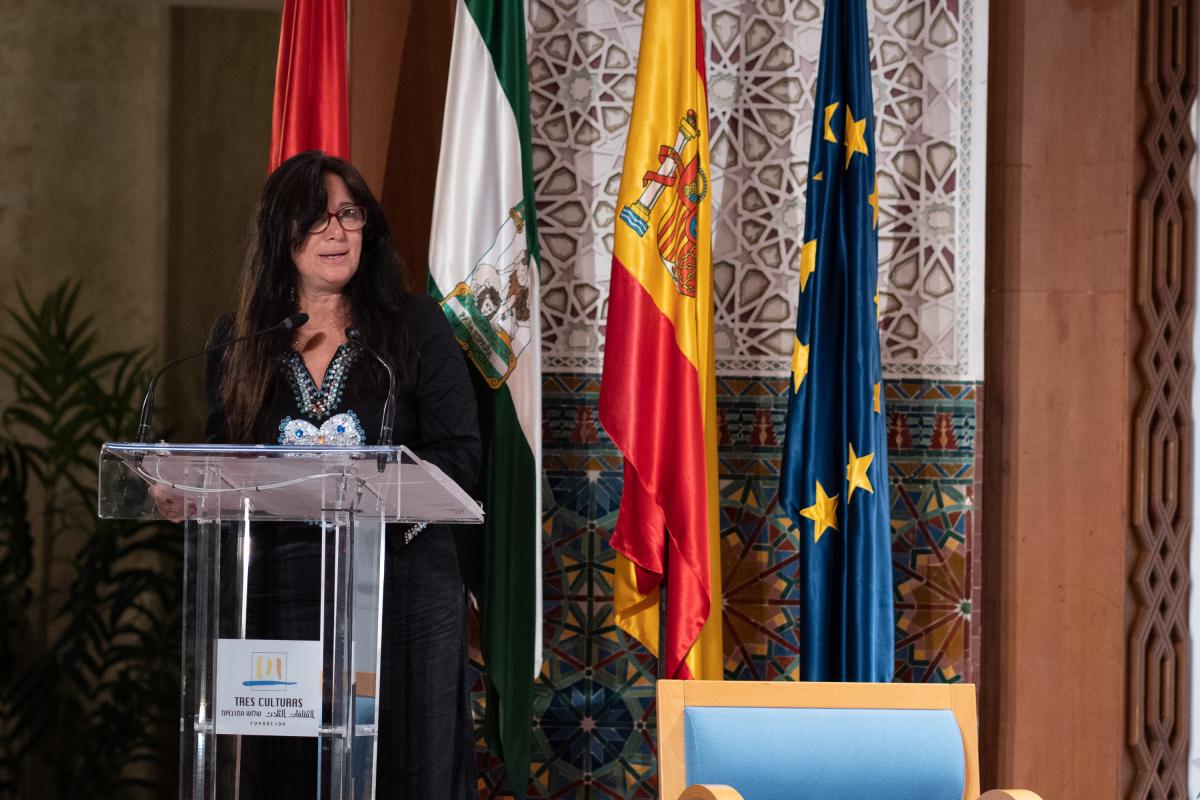
Artist Terry Katalan, who was born in Istanbul to a Sephardic and Georgian family, had always felt a “strong bond’’ between herself and Anatolian culture. Inspired by the philosophies of thinkers such as Mevlana and Yunus Emre, Katalan has been reflecting the mystery and spirituality of Anatolian culture in her works for more than 35 years.
Katalan lived in Barcelona for 16 years. Throughout her career, she has exhibited and curated different artistic and cultural projects. During her stay in different countries, she has always promoted Turkish culture by exhibiting the arts of different ethnic groups in her country. Currently living in London, Katalan continues her cultural and artistic studies.
Artist, in his collage works, which consist of natural elements such as oil paint and leaves or recycled fabric, represents symbols such as evil eye beads, which have a history of 3,500 years, the cultural symbols of Anatolia, and the “Hand of Fatma’’, which is very common in a wide geography from North Africa to the Middle East and also known as “Hand of Mary’’ and “Hamsa’’.

